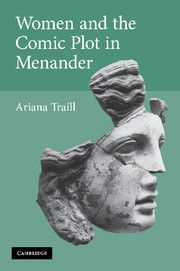Chapter 1 - Those obscure objects of desire
Published online by Cambridge University Press: 22 September 2009
Summary
κατὰ πολλά γ̕ ἐστὶν οὐ αλῶς εἰρημένον
τὸ γνῶθι σαυτόν· χρησιμώτερον γὰρ ἦν
τὸ γνῶθι τοὺς ἄλλους
(Thrasyleon, Men. fr. 181 K-A)Most of the time ‘know thyself’ is not good advice: ‘know other people’ would be a lot more useful.
There is a plot type that has become a staple in the western comic repertoire: the troubles of a small community – a few families, some friends – escalate as misunderstandings grow, accusations fly, and everything threatens to unravel until the situation is set right with the discovery of a long-lost son or daughter. The lovers can now marry; the rich man has an heir; the orphan finds his or her parents. These mistaken identity plots are essentially stories of wish-fulfillment which pretend, perhaps in deference to conservative attitudes towards social mobility, that the transformations required by poetic justice are simply revelations of a hidden truth. The plot type may be traced back to Plautus and Terence, who inspired the Renaissance dramatists who in turn instated it at the heart of the western comic tradition. Credit for its original development, however, must go to the Greek models for the Roman plays, most of which have been lost. Fortunately, a number of the comedies of Menander (342/1 – c. 290 bc), the most famous Greek New Comic playwright, still survive. They center on problems of social identity and the obstacles that blind people to truths about their closest friends and family.
- Type
- Chapter
- Information
- Women and the Comic Plot in Menander , pp. 1 - 13Publisher: Cambridge University PressPrint publication year: 2008

